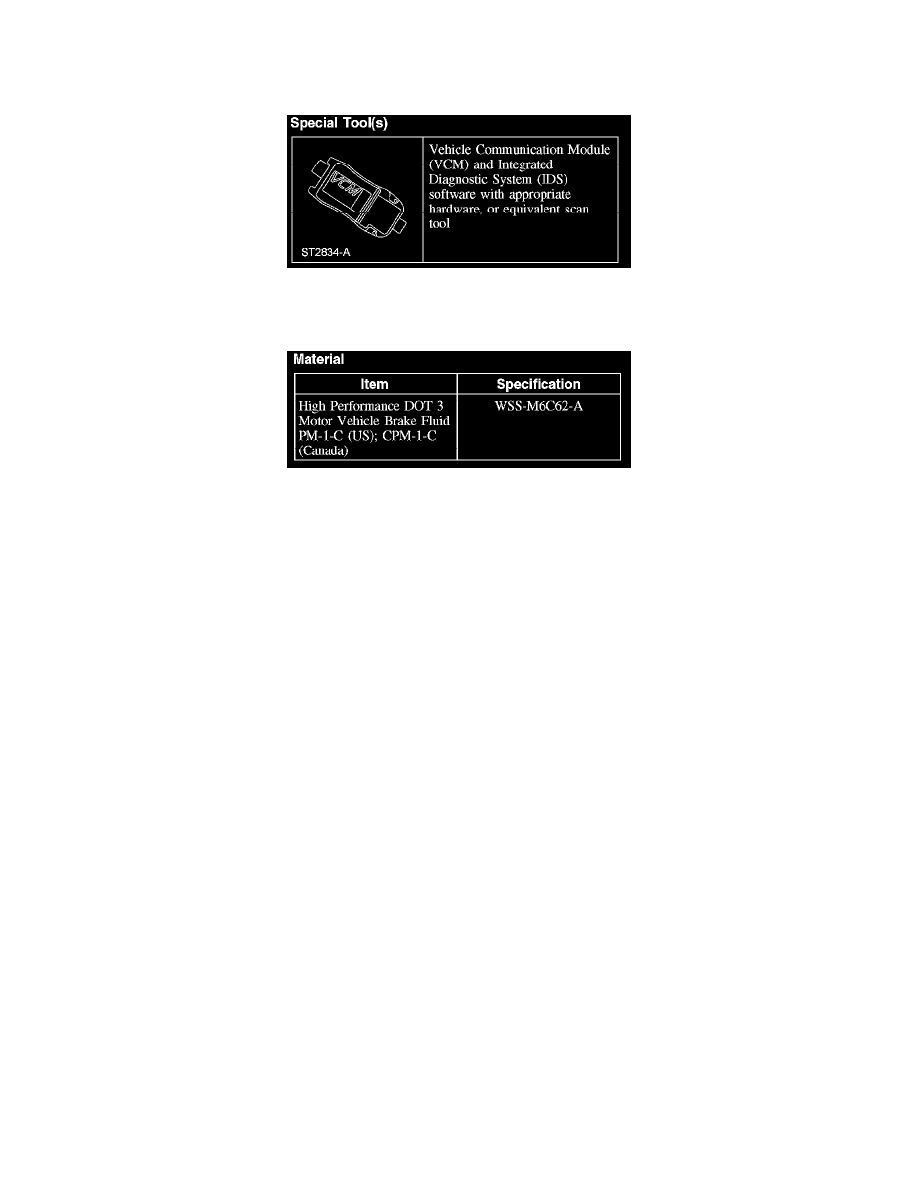Mariner 2WD V6-3.0L (2008)

Brake Bleeding: Service and Repair
Brake System Bleeding
Brake System Bleeding
Special Tool(s)
Material
Material
Manual Bleeding Method
WARNING: Do not use any fluid other than clean brake fluid meeting manufacturer's specification. Additionally, do not use brake fluid that
has been previously drained. Following these instructions will help prevent system contamination, brake component damage and the risk of
serious personal injury.
WARNING: Carefully read cautionary information on product label. For EMERGENCY MEDICAL INFORMATION seek medical advice.
In the USA or Canada on Ford/Motorcraft products call: 1-800-959-3673. For additional information, consult the product Material Safety
Data Sheet (MSDS) if available. Failure to follow these instructions may result in serious personal injury.
CAUTION: Do not allow the brake master cylinder reservoir to run dry during the bleeding operation. Keep the brake master cylinder
reservoir filled with clean, specified brake fluid. Never reuse the brake fluid that has been drained from the hydraulic system. Damage to the
brake system components may occur.
CAUTION: Brake fluid is harmful to painted and plastic surfaces. If brake fluid is spilled onto a painted or plastic surface, immediately wash
it with water.
NOTE: When any part of the hydraulic system has been disconnected for repair or replacement, air can enter the system and cause spongy brake pedal
action. This requires bleeding of the hydraulic system after the repair is finished or after the new component is installed. The hydraulic system can be
bled manually or with pressure bleeding equipment.
1. Clean all dirt from and remove the brake master cylinder filler cap and fill the brake master cylinder reservoir with clean, specified brake fluid.
2. Remove the bleeder screw cap and place a box end wrench on the RH rear bleeder screw. Attach a rubber drain hose to the RH rear bleeder screw
and submerge the free end of the hose in a container partially filled with clean, specified brake fluid.
3. Have an assistant pump the brake pedal at least 3 times and then hold firm pressure on the brake pedal.
4. Loosen the RH rear bleeder screw until a stream of brake fluid comes out. While the assistant maintains pressure on the brake pedal, tighten the
RH rear bleeder screw.
^
Repeat until clear, bubble-free fluid comes out.
^
Refill the brake master cylinder reservoir as necessary.
5. Tighten the RH rear bleeder screw and install the bleeder screw cap.
^
Tighten to 16 Nm (12 lb-ft).
6. Repeat Steps 2 through 5 for the LH rear, RH front and LH front bleeder screws in this order.
^
Refill the brake master cylinder reservoir as necessary.
Pressure Bleeding Method
WARNING: Do not use any fluid other than clean brake fluid meeting manufacturer's specification. Additionally, do not use brake fluid that
